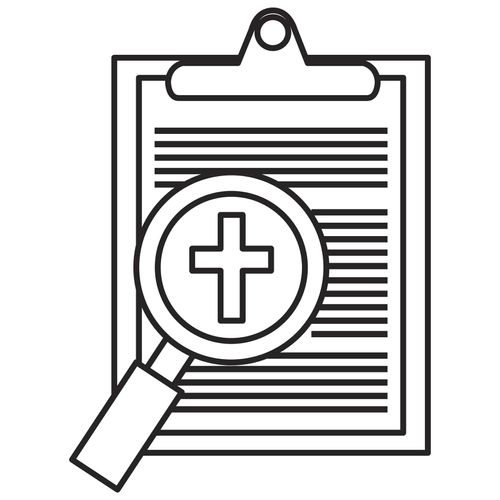Call Us Now!
219-464-9800
Fax: 219 464-9877
Diabetes Mellitus
WHAT YOU NEED TO KNOW ABOUT DIABETES MELLITUS?
If you or a loved one suffers from hypoglycemia, the proper treatment can be the difference in your overall health. At Abdus Lakhani, MD
we specialize in diagnosing and treating diabetes mellitus
for our patients in Valparaiso, Indiana.
For decades Dr. Lakhani has studied the best treatments when providing care to patients suffering from hypoglycemia. Treatment options are available based on the severity of your symptoms. More can be learned using the information below or by scheduling your appointment today.
Hypoglycemia (Low Blood Sugar)
- What Is Hypoglycemia?
Hypoglycemia is when your blood sugar falls below 70 mg/dl.
- What Causes Hypoglycemia?
- Delaying or skipping a meal or bedtime snack
- Eating too little food (carbohydrate)
- Taking too much insulin or too much of certain types of diabetes pills
- Increased or an unusual amount of activity or exercise
- Drinking alcohol
- Changes in your diabetes treatment plan
- What are symptoms?
Symptoms of hypoglycemia may range from mild to severe. It is important to treat symptoms as soon as you recognize them,so a medical emergency does not occur. Common symptoms are listed below.
Mild Symptoms
- Sweaty, Shaky
- Nervous, Irritable
- Light Headed
- Weak
- Hungry
- Tingling of Tongue/Lips
- Rapid Heart Rate
- Confusion
Severe Symptoms
- Unable to Self-Treat
- Seizures
- Loss of Consciousness
Some individuals do not experience the early warning signs symptoms of hypoglycemia until their blood sugar is dangerously low. This is called hypoglycemia unawareness. Frequent blood sugar monitoring is a must for individuals who experience hypoglycemia unawareness.
- What Should I Do to Treat Hypoglycemia?
Follow the "15/15 Rule" to treat hypoglycemia:
- Check your blood sugar (if possible).
- If your blood sugar is less than 70 mg/dl, EAT or DRINK one serving of food with 15 grams of carbohydrate.
- Retest blood sugar in 15 minutes.
- If blood sugar is still below 70 mg/dl, eat another 15 grams carbohydrate.
- Repeat testing and treating until your blood sugar is above 70mg/dl.
- If it is more than 1 hour until your next scheduled meal or snack, eat another 15 grams of carbohydrate.
Examples of foods with 15 grams of carbohydrate include:
- 3-4 glucose tablets
- 1 tube of glucose gel
- 1 cup Gatorade
- Vz Can Regular Soda Pop
- 1 tablespoon honey
- 6-8 jellybeans or lifesavers
- 3 pieces of hard candy
- 12 cup juice or canned fruit
- 2 tablespoons raisins
- 6 saltine crackers or 1 slice bread
- 3 graham cracker squares
- 1cup milk (skim or 1%)
IMPORTANT:
Avoid high fat foods (like chocolate and peanut butter) when treating low blood sugar. Foods that are high in fat are digested slowly and take much longer to raise blood sugar to a safe level.
IMPORTANT:
If your blood sugar is below 50mg/dl, eat or drink 2 servings of carbohydrate foods (30 grams of carbohydrate). Than follow steps 3-6 listed above.
Call Your Doctor if the Following Occurs
- You had severe hypoglycemia that required assistance to treat.
- You had 2 or more episodes of hypoglycemia in one day.
- You had hypoglycemia 2 or more days in the same week.
- Pregnant women need to communicate all episodes of hypoglycemia immediately.
More Helpful Hints
- Carry emergency food with you at all times.
- Test blood sugar before driving.
- Teach family,friends and co-workers how to recognize symptoms and treat hypoglycemia.
- Test blood sugar more often on days you exercise.
- Wear ID stating that you have diabetes.
Foods with 15 Grams of Carbohydrate per Serving
| 1 Slice Bread (white, whole wheat) | 1 Small Apple, Orange, Pear, Peach, or Nectarine |
| 1/2 English Muffin, Hotdog or Hamburger Bun | 3/4 Cup Blueberries, Blackberries, or Pineapple |
| 1 Small Plain Roll | 1/3 Cup Cantaloupe |
| 1/2 Pita | 1/2 Cup Canned Fruit (in juice, not syrup) |
| 1 Small Tortilla Shell | 1/2 Grapefruit |
| 1/2 Cup Cooked Cereal | 2 Tablespoons Raisins |
| 3/4 Cup Unsweetened Dry Cereal | 1 1/4 Cup Strawberries |
| 8 Animal Crackers | 1/2 Cup Unsweetened Juice* |
| 3 Graham Crackers | 2 Plums |
| 4-6 Round Crackers | 1 Large Kiwi |
| 6 Saltine Crackers | 1/2 Mango, Papaya |
| 1/3 Cup Rice/Pasta | 15 Small Grapes |
| 1/3 Cup Cooked Kidney Beans | 1/2 Cup Cooked Vegetables |
| 1/2 Cup Peas | 1 Cup Raw Vegetables |
| 10 French Fries | 1 Cup Milk (skim, 1%, 2%) |
| 1/2 Cup Corn or Peas | 1/4-1/2 Cup Non-Fat Pudding (check package) |
| 5 Vanilla Wafers | 1 Cup Plain Yogurt |
| 1/2 Cup Sweetened Gelatin | 1 Cup Sports Drink |
| 1 Popsicle Stick | 1 Cup Milk |
| 1/4 Cup Sherbet | 1 Cup Broth Soup with Vegetables |
| 4 Ounces Juice, Orange or Apple |
CONTACT INFORMATION
Abdus Lakhani, MD
Phone: 219-464-9800
Fax: 219-464-9877
Email: alakhanimd@direct.practicefusion.com
Address: 2701 Leonard Drive, Valparaiso, IN 46383
Phone: 219-464-9800
Fax: 219-464-9877
Email: alakhanimd@direct.practicefusion.com
Address: 2701 Leonard Drive, Valparaiso, IN 46383
HOURS OF OPERATION
| Mon | 9:00 AM - 05:00 PM |
| Tue | 8:00 AM - 4:00 PM |
| Wed | 8:30 AM - 4:30 PM |
| Thu | 09:00 AM - 05:00 PM |
| Fri | 8:00 AM - 4:00 PM |
| Sat-Sun | Closed |
BROWSE OUR WEBSITE
CONTACT INFORMATION
Abdus Lakhani, MD
Phone: 219-464-9800
Fax: 219-464-9877
Email: alakhanimd@direct.practicefusion.com
Address: 2701 Leonard Drive, Valparaiso, IN 46383
Phone: 219-464-9800
Fax: 219-464-9877
Email: alakhanimd@direct.practicefusion.com
Address: 2701 Leonard Drive, Valparaiso, IN 46383
HOURS OF OPERATION
| Mon | 9:00 AM - 05:00 PM |
| Tue | 8:00 AM - 4:00 PM |
| Wed | 8:30 AM - 4:30 PM |
| Thu | 09:00 AM - 05:00 PM |
| Fri | 8:00 AM - 4:00 PM |
| Sat-Sun | Closed |
Content, including images, displayed on this website is protected by copyright laws. Downloading, republication, retransmission or reproduction of content on this website is strictly prohibited. Terms of Use
| Privacy Policy

